Instructions for the use of the fungicide HOM and the properties of the drug
As an alternative to processing with Bordeaux mixture or copper sulfate, gardeners and gardeners use copper oxychloride - HOM. The instructions for the use of this fungicide say that the drug is safe for humans, but has a detrimental effect on pathogens of fungal diseases. The product is suitable for spraying vegetables, fruit trees and berry bushes, as well as ornamental plants.
What is HOM?
Professional plant protection product HOM is a green powder that dissolves quickly in water. The drug can be purchased in packs of 20 or 40 g, in boxes of 10 and 25 kg.
Copper oxychloride is a biologically active substance of contact action. Once on the surface of the leaf and stem, it destroys the causative agents of many fungal diseases:
- anthracnose,
- brown spot,
- peronosporosis,
- late blight, etc.
HOM does not penetrate into the plant. Provided that the instructions are strictly followed, copper oxychloride does not have a toxic effect on humans, bees and earthworms. Once in the soil, the fungicide decomposes to simple, harmless compounds in 1-6 months.
Advantages and disadvantages of a fungicide
Many crop protection professionals consider HOM to be more effective than copper sulfate and Bordeaux mixture. The drug does not cause leaf burns, is safe for human skin, and has low toxicity.
Other pluses of HOM:
- possible use as a prophylactic agent;
- can be used against diseases on crops intended for food consumption and on ornamental plants;
- allowed to combine with other organic and inorganic preparations;
- does not lose its properties when used in hot weather;
- the solution for processing is prepared quickly - it is enough to dilute the required amount of powder in water;
- filtering is not required;
- after spraying, there are no white spots on the leaves.
Another advantage of HOM over other products is its affordable price.
The disadvantages of the drug include:
- low resistance of the fungicide to precipitation - after rain, re-treatment is required;
- inability to penetrate into tissues, which leads to insufficient effectiveness of the fight against already developed fungal diseases;
- large expense of funds due to the need to process leaves on both sides;
- the ability of copper oxychloride to cause corrosion of metal containers with a ready-made solution;
- a ban on the use of the product during flowering plants;
- relatively short term of protection (12-14 days).
When and how to use HOM?
The drug is used to treat plants for prophylactic purposes, as well as with the initial signs of fungal or bacterial infections. Can be used to prevent mold on seedlings.
Spraying is carried out after the leaves bloom, several times per season.
Treatment of soil, plants with unblown buds in spring, autumn after foliage has fallen is considered ineffective.
Disinfection is carried out in dry, calm weather in the early morning or evening. High air temperature favors the effectiveness of the procedure.
It is not recommended to use HOM during the rainy season (or it should be applied again after the leaves have dried).
Food crops
The spectrum of action and dosage depends on the crop to be processed.
For macrosporiosis, brown spot, late blight on tomatoes for spraying, a solution is prepared at the rate of 40 g of HOM per 10 liters of water.The same proportion is observed if it is necessary to protect onions, cucumbers, beets, potatoes from any of the following infections:
- anthracnose;
- cucumber bacteriosis;
- peronosporosis;
- cercosporosis.
Vegetables are sprayed 3 to 5 times throughout the season. Stop procedures at least 5-7 days before harvest.
Fruit trees are protected with the HOM preparation against such diseases:
- pome scab, maniliasis;
- coccomycosis;
- curliness;
- clasterosporium disease.
The concentration of the working solution for spraying trees is 30 g of HOM per 10 liters of water. One tree requires 3-5 liters of liquid. Disinfection is carried out four times throughout the season, and is stopped 3 weeks before harvesting.
Copper oxychloride protects grapes from anthracnose and mildew. Up to 6 treatments are carried out - before and after flowering, at the stage of 4 leaves in wet weather, the planting is sprayed three times, with 7-8 leaves, 2 more procedures in dry heat. Stop spraying a month before harvest. The ratio of HOM and water is 40 g per 10 liters.
Ornamental plants
For ornamental shrubs, flowers (grown in open ground and indoor), the solution is prepared from 30 g of copper oxychloride per 10 liters of water.
During flowering, spraying a copper-containing preparation is prohibited!
If the question arises about protecting the orchid, then experts do not recommend rinsing off the product. The treated flower leaves must be allowed to dry. The plant should be isolated from healthy flowers during treatment.
Interaction with other drugs
When treating diseases of bacterial and fungal origin, the use of copper oxychloride alone may not be enough. In such cases, system tools are additionally used.
Preparations with which HOM works well:
- "Fufanon",
- "Epin",
- "Entobacterin",
- Inta-Vir.
It is not recommended to combine a copper-containing pesticide if the preparation contains alkali (lime) for additional treatment.
Rules for working with copper oxychloride
HOM is ranked among the means of the ІІІ hazard class. Correct use does not involve the risk of poisoning people or pets.
It is important to observe the following rules:
- Do not allow the product to enter drinking water or fish ponds.
- The solution is prepared in a specially adapted plastic container; food containers cannot be used.
- Before spraying, you must wear a protective suit, gloves, a respirator, close your eyes with glasses.
- At the end of the procedure, you should change clothes, thoroughly wash your hands, face with soap, and rinse your mouth.
- It is strictly forbidden to smoke while working with a chemical, to consume alcoholic beverages for 24 hours after (the possible toxic effect increases).
If HOM gets into eyes or skin during operation, immediately wash the affected area with cold running water or soapy water.
In their reviews of the HOM preparation, plant breeders recommend preparing such an amount of solution that will be used at a time. Practitioners note the high efficiency of the copper-containing agent in the prevention and control of plant infections at the initial stages.
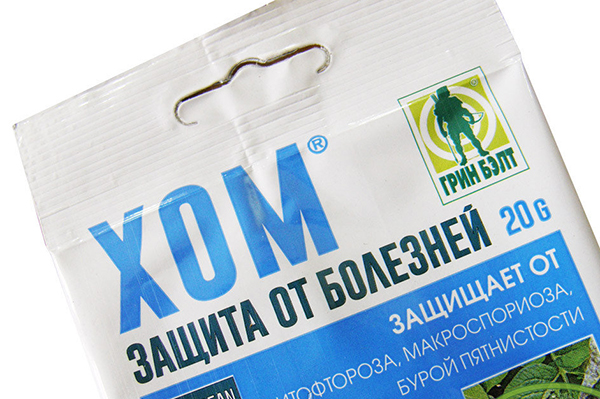
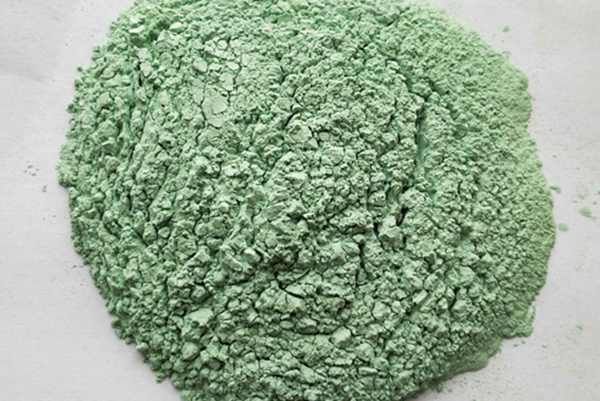
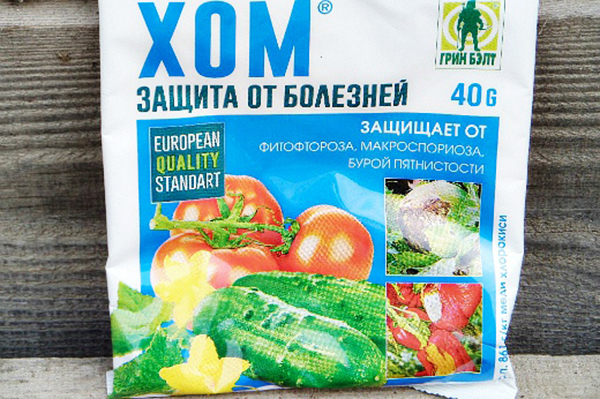
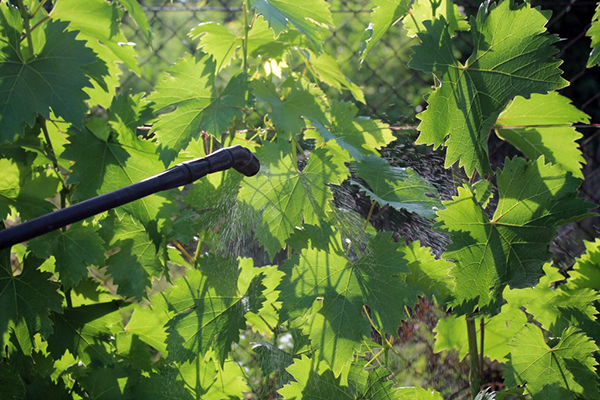

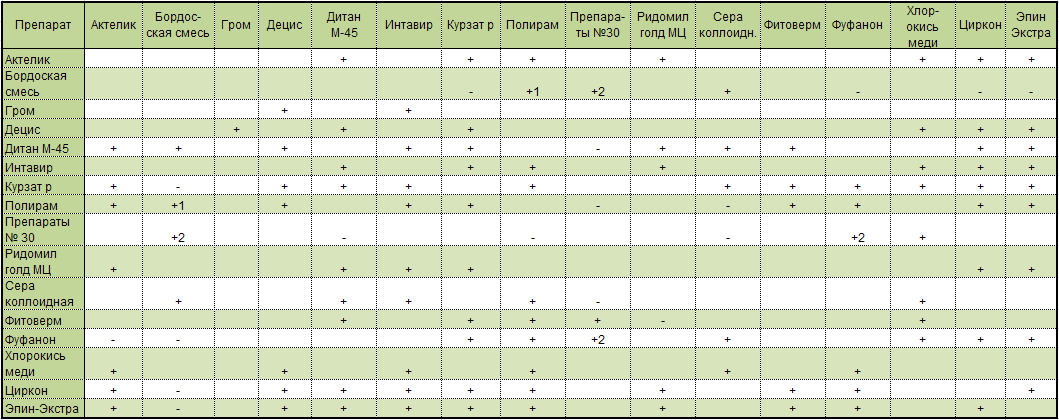


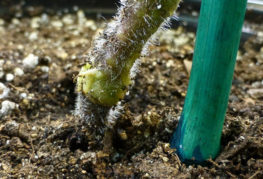


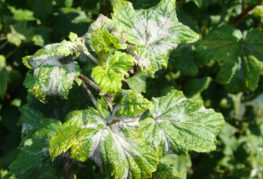
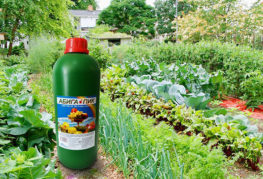
and will be published shortly.